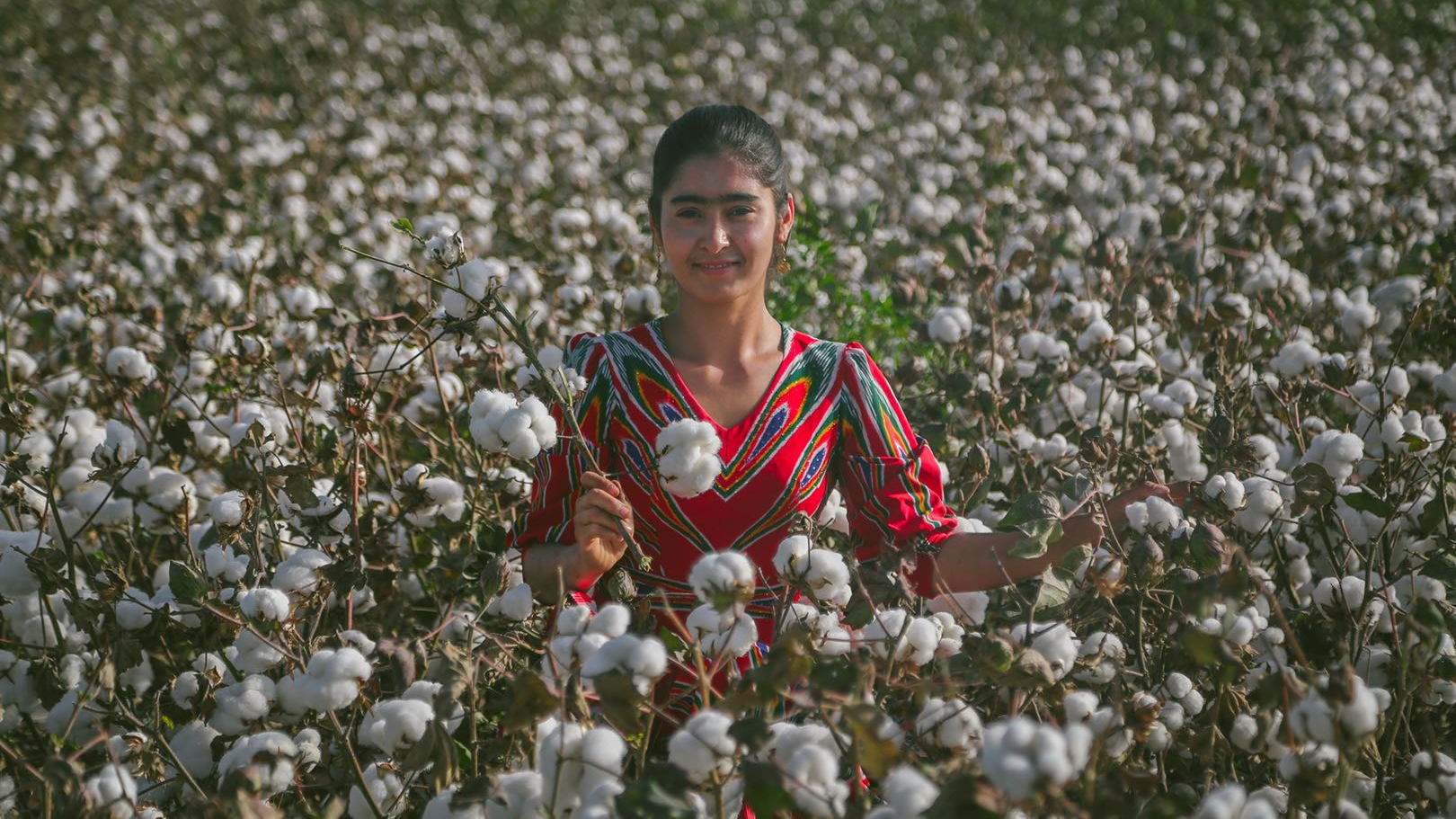
Nurmangul picks cotton in a village under Awat, Aksu Prefecture, Xinjiang, China, September 20, 2018. /Photo courtesy of Parhat Yusanjan
Nurmangul picks cotton in a village under Awat, Aksu Prefecture, Xinjiang, China, September 20, 2018. /Photo courtesy of Parhat Yusanjan
The Swedish fast-fashion giant H&M has come under fire in China. A viral article on Chinese social media has recently put the spotlight on the conglomerate after criticizing the company for its refusal to source cotton from Xinjiang, which the retailer had announced on its website last year. The saga has sparked anger among Chinese netizens and celebrities, with many calling for a boycott of the brand.
H&M had said in a statement published months ago that "it was deeply concerned about reports... that include accusations of forced labor" in Xinjiang. The far-western region in China produces much of the country's cotton and supplies the material to many international brands.
The H&M incident is only the latest saga on the roller coaster of deteriorating ties between China and the U.S. as well as the wider Western world. Accusations regarding Chinese government policies in Xinjiang have been manifold, with cotton, tomato and solar power among the targets of the West's smear campaign.
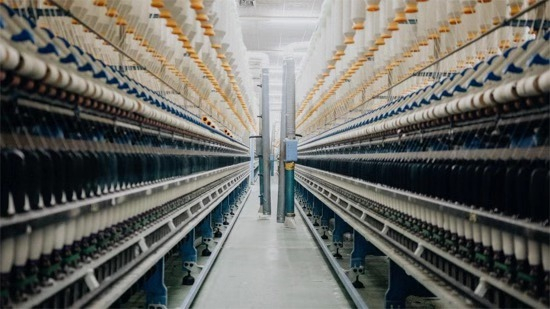
A cotton and textile factory in Awat County, Aksu Prefecture, Xinjiang Uygur Autonomous Region, northwest China, January 5, 2020. /CGTN
A cotton and textile factory in Awat County, Aksu Prefecture, Xinjiang Uygur Autonomous Region, northwest China, January 5, 2020. /CGTN
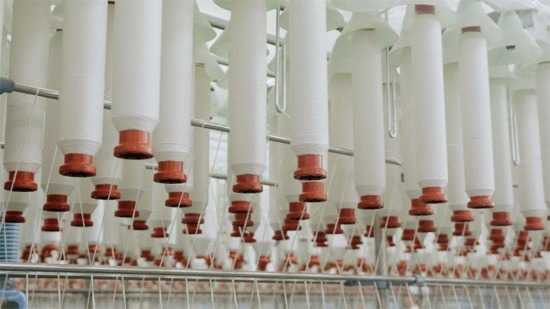
Knitting machines in the company's factory, Awat County, Aksu Prefecture, Xinjiang Uygur Autonomous Region, northwest China, January 5, 2020. /CGTN
Knitting machines in the company's factory, Awat County, Aksu Prefecture, Xinjiang Uygur Autonomous Region, northwest China, January 5, 2020. /CGTN
China produces roughly 22 percent of the world's cotton, of which 87.3 percent –equivalent to 5.2 million tons – comes from Xinjiang, according to the latest data from the National Bureau of Statistics. Besides massive exports, China itself is the world's largest consumer of cotton and related textile products. To meet the huge domestic demand, it imports some 2 million tons of cotton from Brazil, India, and several other countries each year.
The total cotton cultivation area in the region reached 37.52 million mu (6.18 million acres) last year. In northern Xinjiang, cotton harvesting has largely been mechanized, while southern Xinjiang has its mechanization rate raised above 40 percent. According to the region's agriculture bureau, mechanized harvesting of cotton in the region accounted for 69.83 percent in 2020.
The mechanization in cotton harvest has been growing at a rate much faster than expected over the years. And before the era of high mechanization dawned on this once impoverished region, people from inland provinces usually came over to help the harvest during the summertime. A feature carried by Chinese National Geography contours a portrait of seasonal migrant workers heading from central Henan to Xinjiang every August. These workers, numbered at some 600,000, accounted for one-quarter of all the farmers needed to harvest the cotton fields.
"It's long been a tradition for villagers in Henan to go to work the field in Xinjiang. Through such seasonal labor, they could earn more to support their family," the article reads. The period from August to October is slack season in Henan but the busiest time for farming in Xinjiang. Those from the province went en masse to the region in order to pick the cash crop, a trend that lasted for almost two decades.
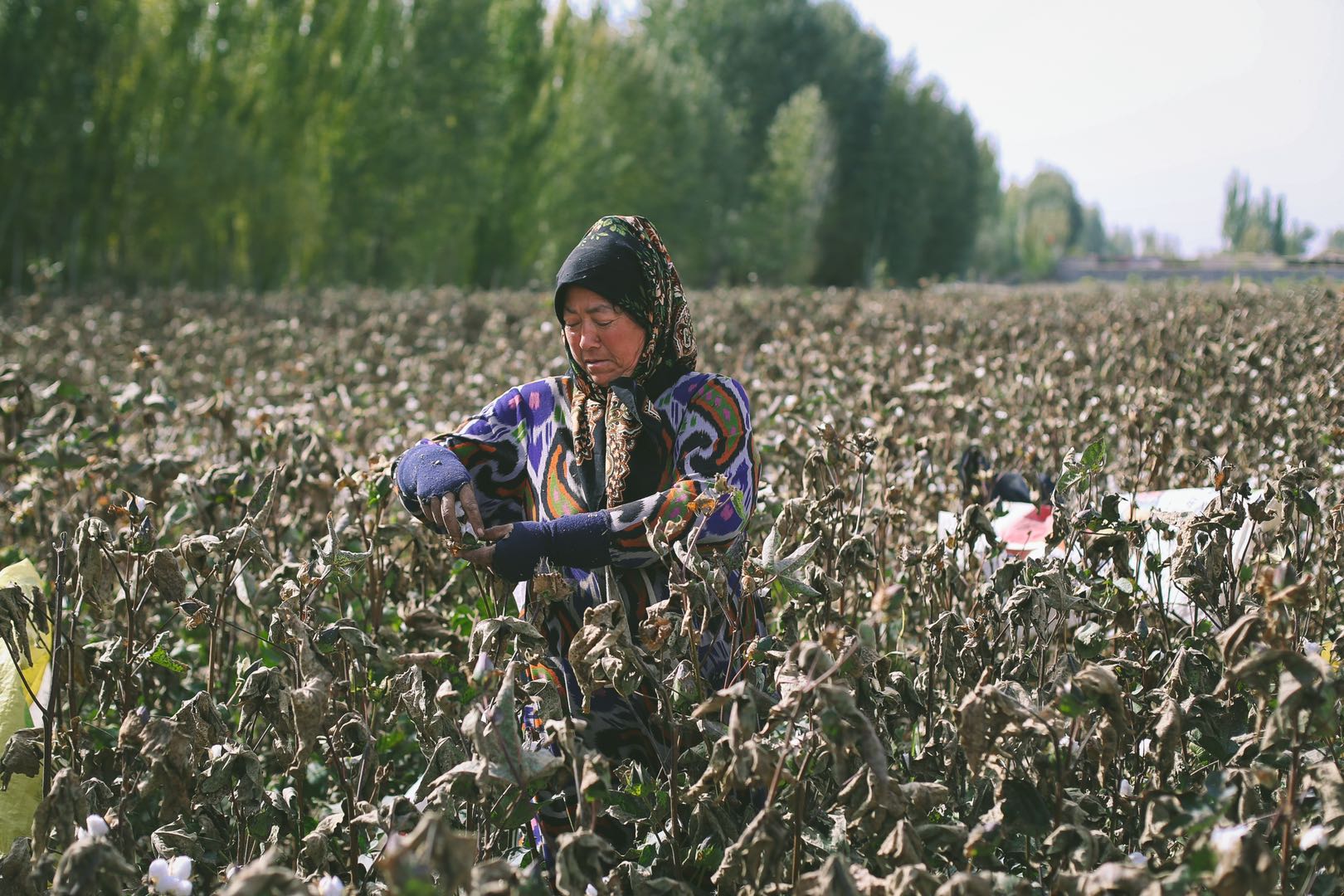
Ayshemham picks cotton in a village under Awat, Aksu Prefecture, Xinjiang, China, October 20, 2017. /Photo courtesy of Parhat Yusanjan
Ayshemham picks cotton in a village under Awat, Aksu Prefecture, Xinjiang, China, October 20, 2017. /Photo courtesy of Parhat Yusanjan
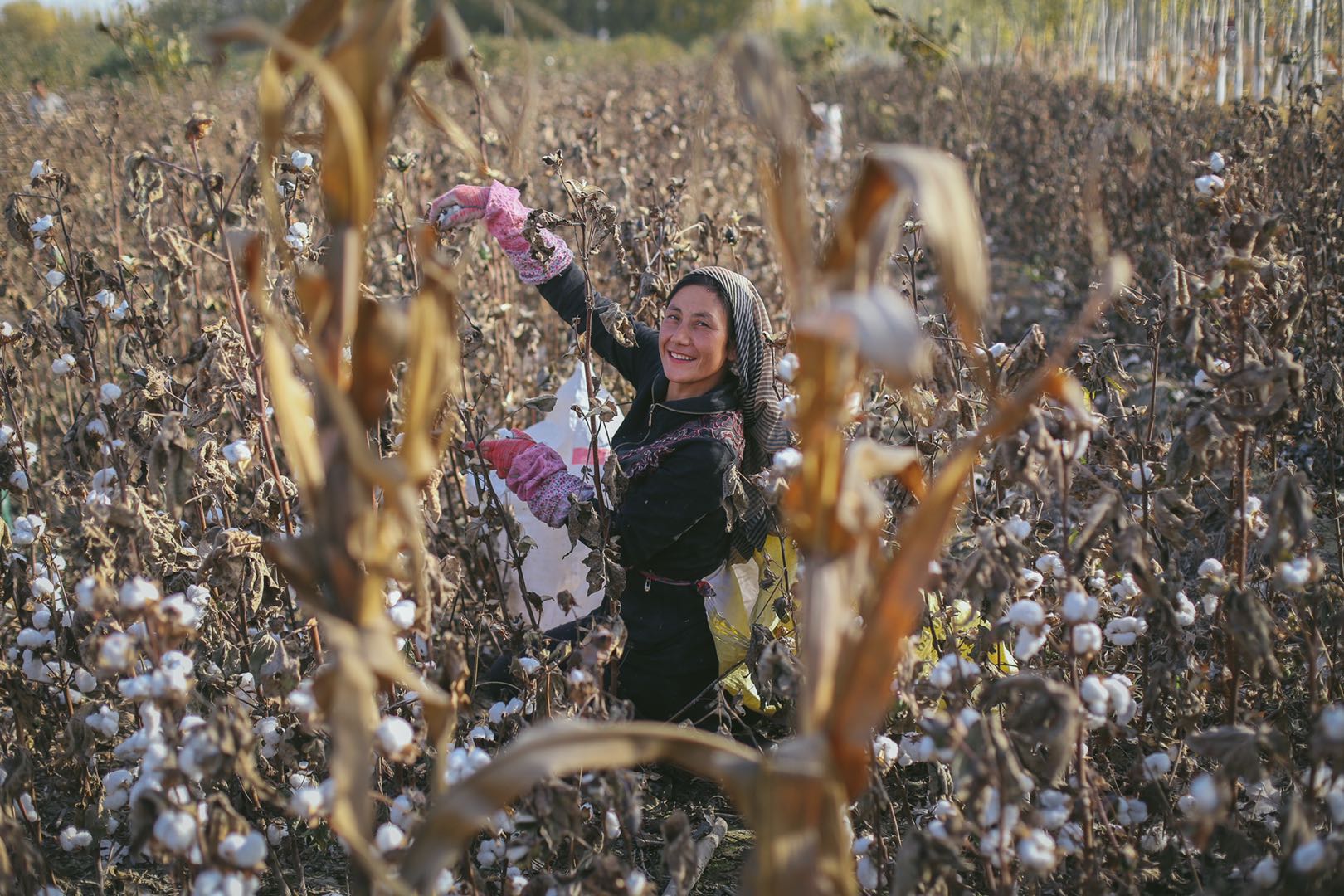
Rehila picks cotton in a village under Awat, Aksu Prefecture, Xinjiang, China, November 5, 2017. /Photo courtesy of Parhat Yusanjan
Rehila picks cotton in a village under Awat, Aksu Prefecture, Xinjiang, China, November 5, 2017. /Photo courtesy of Parhat Yusanjan
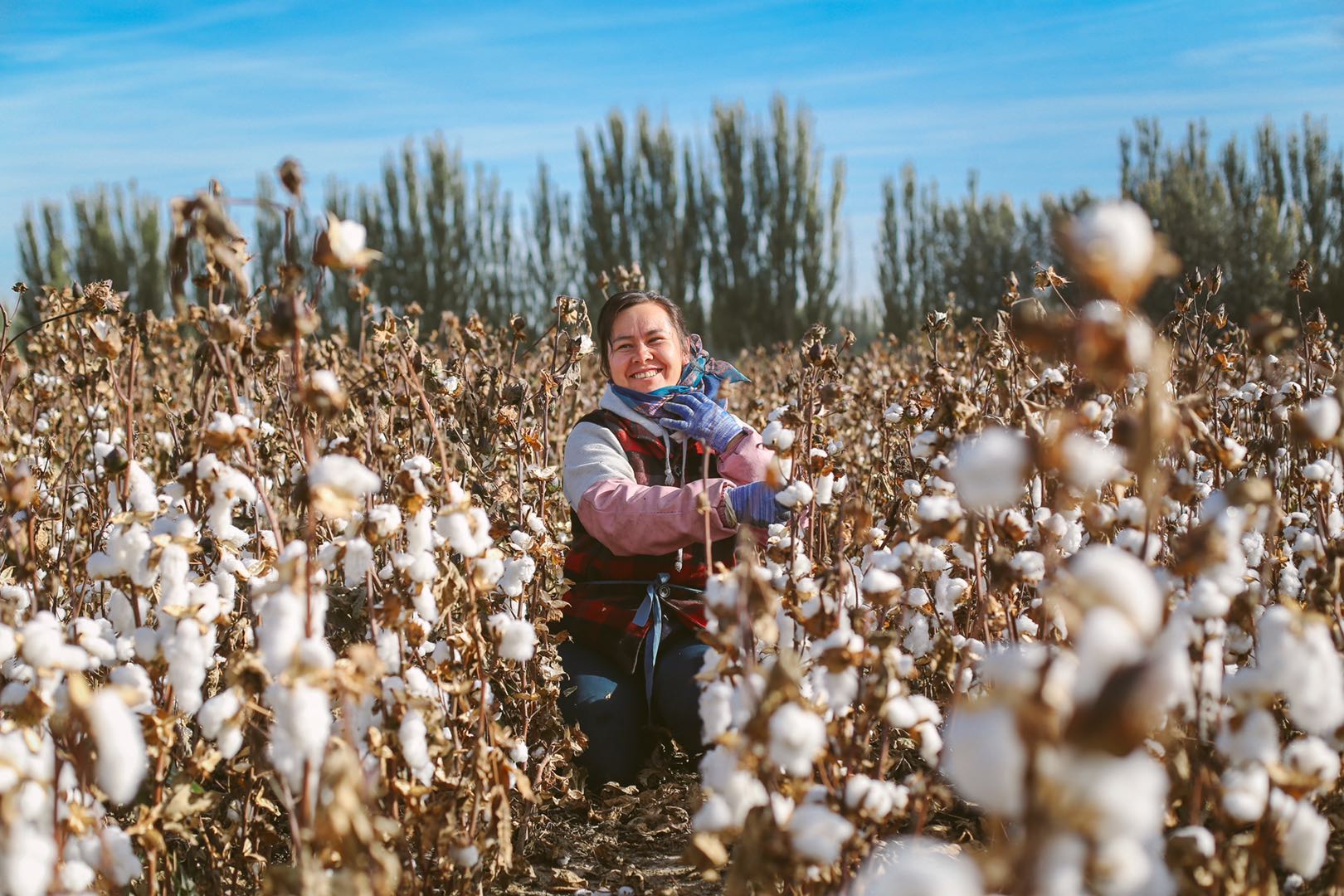
Quhangul picks cotton in a village under Awat, Aksu Prefecture, Xinjiang, China, October 20, 2018. /Photo courtesy of Parhat Yusanjan
Quhangul picks cotton in a village under Awat, Aksu Prefecture, Xinjiang, China, October 20, 2018. /Photo courtesy of Parhat Yusanjan
After the harvest season, the fresh cotton goes to textile factories nearby. In recent years, more yarn mills have been built in large cotton-producing areas to facilitate local residents to work off-seasons while saving costs for long-haul transportation to inland factories.
Last year, we visited such a factory in Awat, a county under southern Xinjiang's Aksu Prefecture. Reputed as the "Town of Cotton," Awat produces one-fifth of the world's long-staple cotton with silkier, lustrous, and more durable fibers, filling markets from Europe to North America.
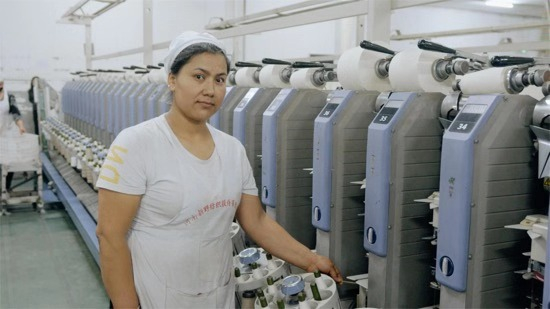
Atkenm Kuwan at work in a cotton textile factory near her home in Awat County, Aksu Prefecture, Xinjiang Uygur Autonomous Region, northwest China, January 5, 2020. /CGTN
Atkenm Kuwan at work in a cotton textile factory near her home in Awat County, Aksu Prefecture, Xinjiang Uygur Autonomous Region, northwest China, January 5, 2020. /CGTN

Aytlam Mamt talks to CGTN outside the factory, Awat County, Aksu Prefecture, Xinjiang Uygur Autonomous Region, northwest China, January 5, 2020. /CGTN
Aytlam Mamt talks to CGTN outside the factory, Awat County, Aksu Prefecture, Xinjiang Uygur Autonomous Region, northwest China, January 5, 2020. /CGTN
For Atkenm Kuwan, working in the cotton mill means staying away from being a housewife and boosting household income. Before starting her work as a knitter last spring, she was a sanitation worker with a monthly income of 960 yuan, which, on top of her husband's monthly income of roughly the same amount, could hardly make ends meet.
"Now I have 2,300-2,500 yuan per month. That's a big help for my family, especially for the education of my children. I have extra savings for them to take extracurricular classes now," Atkenm said.
What's more, she has more time to care for her two children since she works 12-hour shifts and then rests for the following 24 hours, like most employees in the region's cotton mills do.
She told us that her biggest dream is to give a good education to her two kids and then to buy a car like her colleagues. "I heard some of my colleagues used to come to work by bicycle or moped, but now they drive to work," she said, with light in her eyes.
Another textile worker, Aytlam Mamt, started working here in 2010. Now responsible for leading one of the mills, she makes 2,800-3,000 yuan after tax each month. "I had worked in a textile plant before I got married, so I chose to come here when my son was six years old as I'm already quite familiar with the whole manufacturing process," the 35-year-old told us.
Like most of their colleagues, the two Uygur women mainly attend to outsized machines that are responsible for much of the spinning labor. The entire process is mechanized, with most of the equipment made domestically and the rest imported from Europe. Once ready to leave the factory floor, cotton products, notably threads in the case of this company, are delivered to coastal metropolises including Guangzhou, Shenzhen and Shanghai for subsequent export to clients in Europe and the U.S.
Training people to process cotton requires significant time and resources, according to Liao Yongfeng, head of the factory's commodity department. The tremendous effort that has gone into its employees, however, seems to have paid off. For the whole story, please read our field report on the factory: Working in 'Big Cotton' in China's Xinjiang.

